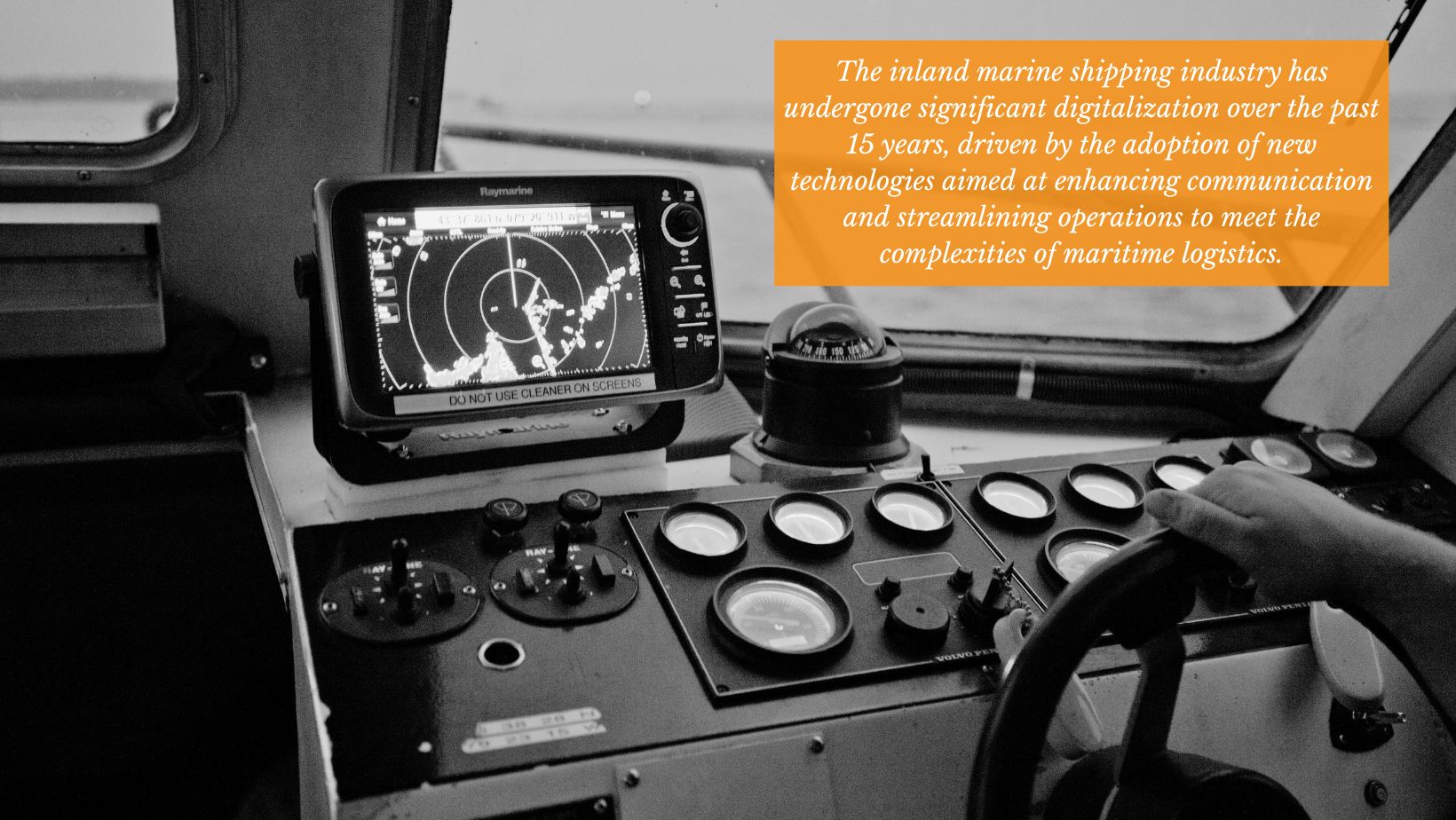Today’s businesses run on data, and marine transport businesses are no exception. But collecting, sharing, and analyzing data are trickier when factoring in not only customers and supply chain partners, but also any number of boats and barges that might be moving at any one time, as well as terminals where they might stop.
This is why the unsung hero of maritime technology is communications standards for data exchange. While such standards are not flashy, they work quietly behind the scenes to ensure seamless exchange of data and communications, which in turn makes the business more efficient.
This does not mean there are zero challenges when it comes to adopting, implementing, and using such standards. This is precisely why having a modern software solution can be such a boon for companies: Such solutions, such as BargeOps, have already solved those challenges, opening the door to more efficient operations.
The Rise of Digital Communications and Management Software in Inland Marine Transportation
The inland marine shipping industry has undergone significant digitalization over the past 15 years, driven by the adoption of new technologies aimed at enhancing communication and streamlining operations to meet the complexities of maritime logistics. One of the biggest advancement has flown under the radar, but plays a critical role in marine transport today: Electronic Data Interchange (EDI).
EDI is, at its heart, a communications standard: It allows computers to have a digital conversation in a standardized language, simplifying communication and reducing errors. By automating the exchange of business documents such as orders, invoices, and shipping details, EDI streamlines operations, reduces errors, and accelerates transaction times.
In other words, EDI offers significant efficiency gains by replacing manual, paper-based processes with electronic communication. Having a universal standard for data transfer ensures seamless communication among vessels, shore-based operations centers, terminals, regulatory authorities, and other stakeholders. This kind of automated “cross communication” further allows efficient data collection, analysis, exchange, and automation, empowering decision-makers with valuable insights and ultimately leading to improvements in efficiency, cost savings, and environmental sustainability.
Additionally, EDI enhances collaboration and integration across supply chain partners, enabling smoother and more seamless business interactions. Increased adoption of EDI by the inland marine industry promises improved speed, data quality, accuracy, and efficiency. Ultimately, EDI can improve productivity and reduce questions while lowering overall costs, taking a significant amount of friction out of the transaction process for barge service companies and their customers.

BargeOps is Helping Overcome EDI Implementation Barriers
Despite the potential benefits, the inland marine shipping industry faces several challenges in implementing EDI:
- The diversity of systems and processes among industry participants can hinder interoperability and standardization.
- There may also be resistance to change from stakeholders accustomed to traditional paper-based methods, requiring education and training efforts to promote adoption.
- Technical challenges, such as integrating EDI with existing systems and ensuring data security and integrity, also pose implementation hurdles.
- Finally, smaller companies within the industry might well lack the resources or expertise to implement EDI effectively, leading to disparities in adoption rates across the sector.
Overcoming these challenges requires industry-wide collaboration, investment in technology infrastructure, and strategic planning to realize the full potential of EDI in inland marine shipping operations.
BargeOps is helping overcome these barriers and drive broader adoption of advanced communication technologies and is poised to lead the industry through further innovation and optimization, driving competitiveness and sustainability in the years to come.
BargeOps and BargeEx: Electronic Data Interchange for the Inland Marine Shipping Industry
BargeOps has a long history with BargeEx. We think using an Electronic Data Interchange (EDI) delivery system to connect barge service companies with their customers delivers a great deal of value. BargeOps can communicate via BargeEx both as a service provider and as a barge line, receiving barge status updates from other vendors.
When vendor documents (transactions) are imported, they create or update barge events and assign the vendor’s agreed-upon billing rates. BargeOps provides a Vendor Bill review feature for reconciling the charges on a vendor’s invoice with the expected charges on these barge events.
BargeEx enables participating companies to exchange traffic information about their barge activities, such as shifts, midstreams, fleeting, cleaning, and more.
Other Ways BargeOps is Improving the Maritime Shipping Industry
BargeOps offers multiple solutions for improving communications and your barge operation’s profitability. In addition to vessel management software design and development expertise, our team delivers advanced data analytics, unlocking actionable data that can be used to better understand your business and identify areas for improvement.
The BargeOps Portal streamlines customer inquiries by providing real-time information with customizable permissions that you control. Instead of relying on daily status emails, customers can access the portal to track locations and statuses of their commodities and barges whenever they need it while reducing the need for inbound calls and emails.
BargeOps Onboard is an integrated boat-based module for traffic management that enables automatic and seamless exchange of information, like orders and barge movements, between shore-based dispatch and boats.
BargeOps Onshore streamlines your back office logistical operations and automates the capture of activities like mid-streaming a barge into the fleet, keeping track of how long it’s in the fleet, and invoicing the customer when it moves out of the fleet.
We save you time by consolidating information into one system, eliminating emails, spreadsheets, and paper by giving you a central system to manage all of your fleeting or harbor management activities.
Ready to discover how BargeOps can improve communication in your barge operations business? Contact us today.


